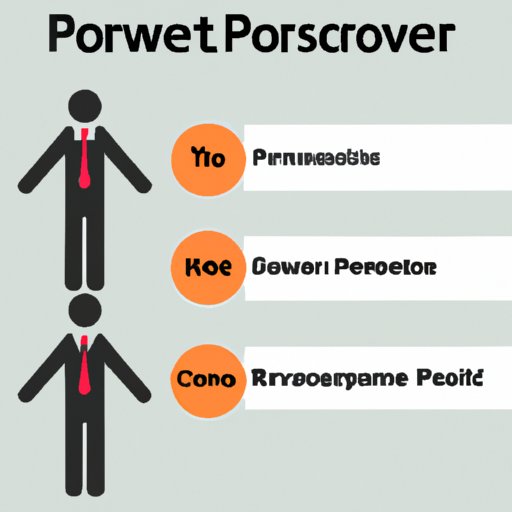Introduction
Leadership is a complex and multi-faceted endeavor, and one of the most important aspects of successful leadership is the ability to effectively influence others. One of the primary methods of influence utilized by leaders is coercive power, which is the use of force or threats of punishment to induce compliance or obedience. In this article, we will explore the role of coercive power in leadership, examining the pros and cons of using it, as well as its potential impact on employee performance.

Examining the Role of Coercive Power in Leadership
Coercive power is often viewed as a negative form of leadership, as it relies on fear and intimidation to motivate employees. However, there are some situations in which coercive power can be beneficial. For example, research suggests that coercive leadership may be effective in situations where urgent action is required, such as during a crisis or when deadlines must be met.
At the same time, there are some significant drawbacks to relying too heavily on coercive power. Research shows that coercive leadership can lead to decreased motivation and lower job satisfaction, as well as higher turnover rates. Additionally, excessive use of coercive power can lead to a lack of trust between the leader and their team, which can negatively impact collaboration and communication.
In order to use coercive power responsibly, it is important for leaders to understand the potential effects of their actions. It is also important to remember that coercive power should only be used as a last resort, and that other forms of influence, such as positive reinforcement and rewards, should be used whenever possible.
Exploring the Impact of Coercive Power on Employee Performance
One of the primary concerns about coercive power is its potential effect on employee performance. While research is mixed on this topic, some studies suggest that coercive leadership can have a negative impact on employee performance due to decreased motivation and morale. Other research suggests that coercive leadership may actually increase performance in the short term, but that the long-term effects are likely to be negative.
It is important for leaders to consider the potential impact of coercive power on employee performance before utilizing it. If leaders decide to use coercive power, they should do so sparingly and ensure that it is used in a responsible manner. Additionally, leaders should take steps to balance coercive power with other forms of influence, such as providing positive reinforcement and rewards for good performance.
Conclusion
In conclusion, coercive power can be an effective form of influence, but it must be used responsibly in order to avoid potential negative consequences. Leaders should consider the potential effects of coercive power on employee performance before utilizing it, and should strive to balance it with other forms of influence. By doing so, leaders can ensure that they are using coercive power in a way that is beneficial to both themselves and their teams.
(Note: Is this article not meeting your expectations? Do you have knowledge or insights to share? Unlock new opportunities and expand your reach by joining our authors team. Click Registration to join us and share your expertise with our readers.)
